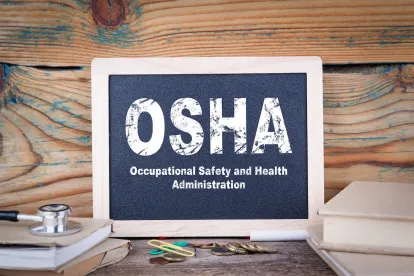As directed by President Joe Biden’s Executive Order issued on January 21, 2021 requiring the Federal Government to take swift action to protect workers from the COVID-19 pandemic, the Occupational Safety and Health Administration (“OSHA”) has released updated guidance on how to prevent exposure and the spread of COVID-19 in the workplace.
The guidance entitled “Protecting Workers: Guidance on Mitigating and Preventing the Spread of COVID-19 in the Workplace” was posted on OSHA’s website on January 29, 2021. As with OSHA’s previous recommendations, this guidance is not mandatory and does not have the same legal effect as an OSHA standard. However, it does give some insight into what OSHA expects to include in an emergency temporary standard (“ETS”) which the new Administration wants the agency to consider and potentially implement by March 15, 2021.
Most employers will be familiar with the elements in the guidance, but here are some of the significant new measures addressed in the guidelines:
-
Employers should provide all workers with face coverings (i.e., cloth face coverings, surgical masks), unless their work task requires a respirator. Many states did not require this and OSHA did not previously recommend employers purchase masks.
-
Provide a COVID-19 vaccine at no cost to eligible employees.
-
Do not distinguish between vaccinated workers and those who are not vaccinated for purposes of implementing safety measures.
-
Minimize the effect of quarantine and isolations by implementing non-punitive policies, and provide paid sick leave. Employers with less than 500 employees are encouraged to provide FFCRA leave which is still available (though not mandatory) through March 31, 2021 under the Families First Coronavirus Response Act.
-
Provide guidance on screening and testing.
-
Assign a workplace coordinator responsible for COVID-19 issues.
OSHA’s guidance related to the COVID-19 pandemic continues to evolve and further changes are expected with President Biden’s new Administration. James “Jim” Frederick, a former United Steelworkers safety official, has been named by the Administration to act as the head of OSHA on an interim basis. Mr. Frederick has indicated that in that role he will be focused on drafting and implementing an enforceable emergency COVID-19 standard. While these efforts may be opposed by various industry groups, employers need to be aware of these potential new developments so they can take appropriate steps to ensure that they are following the best recommendations to address the pandemic and provide their employees a safe and healthy working environment.




 />i
/>i
